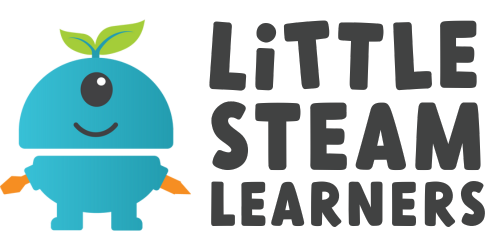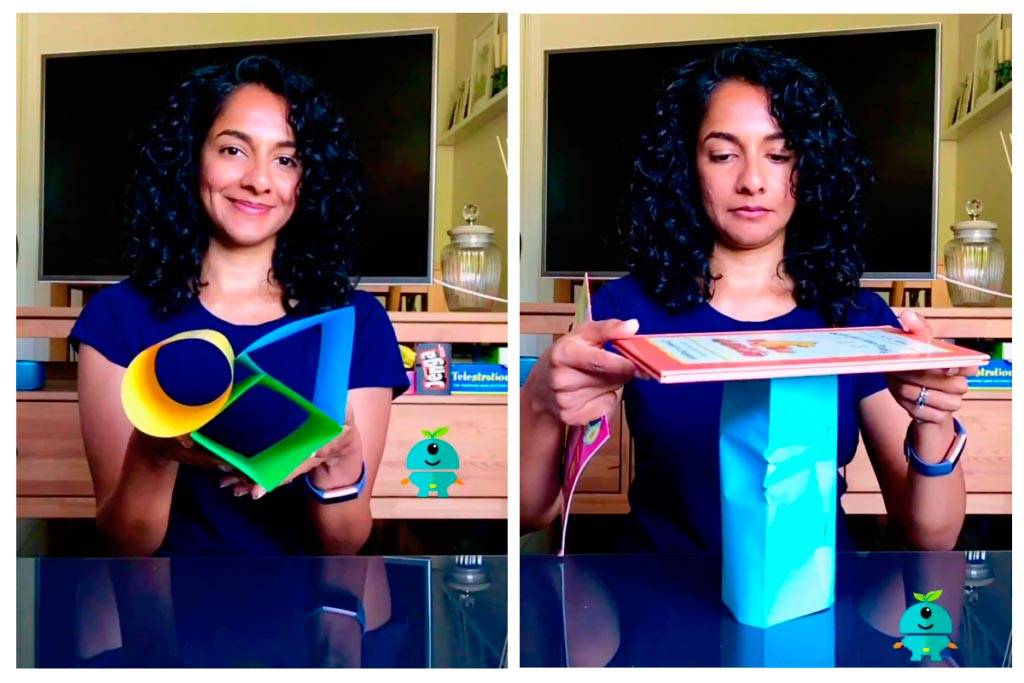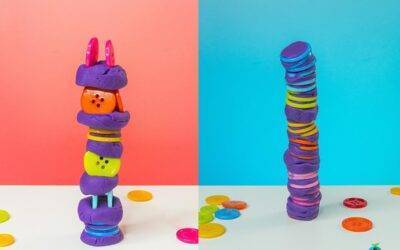Ever wonder if a piece of paper can hold up books? It sure can! Try this activity out to test the strength of a piece of paper. We love easy STEAM activities like this that use supplies you already have around the house.
This STEAM engineering challenge is simple and can be done by little and junior learners. All you need is some paper, tape, and books.
Now let’s get STEAM-ing!
How to make a piece of paper hold up books
What you need:
- Paper or cardstock
- Tape
- Books
How to:
We are going to create different shaped columns and test their strength by piling books on top. Follow the directions below or watch the video for a quick demonstration and instructions.
Step 1: Create a circular column by rolling the paper along the short edge and taping it together.
Step 2: To create a rectangular column
-
- Fold the paper in half. Open the paper.
- Fold the short edges towards the crease in the middle.
- Open the paper. Tape the short edges together. Voila! You have a square column.
Step 3: To create a triangular column
-
- Divide the paper into 3 equal sections.
- Crease along these sections
- Open the paper. Tape the short edges together and you have a triangular column.
Step 4: Stand each column up. Test your columns by stacking one book at a time on the columns.
-
- How many books can each column hold?
- Which column is the strongest?
Music by Ikson
Music: Balloon
https://www.iksonmusic.com/
The STEAM behing the fun
Where have you seen columns? Why do you think architects and engineers use columns when building? Columns definitely have a design element to them but they are also functional. Columns are often used to help support buildings. They, therefore, need to be strong and capable of withstanding the force of compression (the weight of the building). You may have noticed many circular columns before, just like the ones used by the Greeks. Why do you think they picked circular columns?
The circular column (cylinder) can support most books because it does not have any edges. Since a circle doesn’t have any edges, the force of the books gets distributed evenly. In other words, all parts of the cylinder are sharing the load of the books. All parts of the cylinder, therefore, contribute to its overall strength until, finally, it collapses.
The square and triangle deform more easily. They shift the weight of the books to their edges and corners, which deforms their walls and leads to a quick collapse.
Inquire and further exploration
- Which column supported the most books?
- Which shape was the strongest?
- Which shape was the weakest?
- What happened to the weakest column right before it collapsed?
- Which column is the best at holding the weight (withstanding compression)?
- What happens when you use two or more of the same column?
- What happens when you use different building supplies such as cardstock or cardboard?
- What happens when you use different weights like blocks instead of books?
- Are thicker or thinner columns better?
Learning engineering skills through play is a lot of fun and a great hands-on way to understand complicated concepts. Happy building my friends!







0 Comments